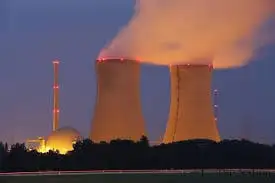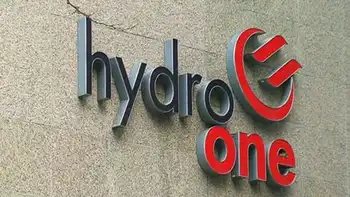Green Grid attacks data centers' power draw
SUNNYVALE, CALIFORNIA - The Green Grid, an ad hoc computer industry consortium exploring ways to make data centers more power-efficient, is preparing to make public details of its expanded membership and technology agenda early 2007.
The news emerged as part of an all-day industry meeting convened in Silicon Valley by the U.S. Department of Energy to discuss ways to reduce power requirements and waste in large computer installations. Computer chip, system and software companies have been trying to come to grips with spiraling demands for energy consumed by large computer centers, especially for government researchers and Internet companies.
Lawrence Berkeley National Laboratory is starting work on a new data center that "could triple power requirements of the whole lab, so it is getting attention from the director on down," said William Tschudi, a project manager for the lab, speaking at the meeting held at the headquarters of Advanced Micro Devices Inc. here. "These supercomputers used to be purchased for performance at any cost, but as power requirements get into the tens of megawatts, the cost of power is becoming an issue."
A handful of companies-including AMD, Hewlett-Packard, IBM and Sun Microsystems-banded together in April under the Green Grid banner to address that problem. The group is still sorting through legal issues to create a formal body - a move it expects to complete early next year.
When it's formally announced, the group will likely include a broad array of computer companies, Intel among them. A technical working group has been meeting and is said to have set an agenda that it is still keeping secret until the formal announcement.
Once the group launches, it expects to invite more members from government and industry to join in its effort. Although the Environmental Protection Agency has been briefed on the group's plans, some officials from the Department of Energy were surprised to discover the group at a recent Silicon Valley meeting.
Industry executives encouraged DOE officials to view the Green Grid as a primary forum for engaging the computer industry on issues about power in the data center. "The worst thing we could do is fracture the limited expertise in the industry on these issues across multiple forums," John Pflueger, a technology strategist for Dell Computer and a member of the Green Grid's technical working group, told DOE officials at the meeting.
"They can be a useful group, but we won't be working with them exclusively," said Andy Karsner, assistant secretary for energy efficiency and renewable energy at DOE, who convened the meeting. "There are at least seven different groups developing performance metrics" for energy efficiency in data centers that the DOE is now aware of, he said.
DOE officials called the meeting to thrash out details of the power problems in the data center. The agency plans to share results of the meeting with EPA officials and to lay plans for follow-up sessions with the industry, Karsner said.
The government does not foresee a need for regulation in data centers but is open to ideas for incentive packages. "We have lots of tools yet to be applied with full force in this area," Karsner said.
The DOE meeting included representatives from computer users such as Dreamworks and Google as well as Pacific Gas and Electric and a broad range of computer chip, system and software companies.
One of the problems the group identified is the lack of standards for measuring how air conditioning is delivered to a data center.
"We're getting better in power efficiency with every processor generation, but we could get another 20 to 40 percent in energy efficiency if we could make changes in some of the mechanical infrastructure in the data center," said Andy Bechtolsheim, a chief architect and co-founder of Sun Microsystems Inc., who attended the meeting.
Related News

Why Is Central Asia Suffering From Severe Electricity Shortages?
LONDON - Central Asians from western Kazakhstan to southern Tajikistan are suffering from power and energy shortages that have caused hardship and emergency situations affecting the lives of millions of people.
On October 14, several units at three power plants in northeastern Kazakhstan were shut down in an emergency that resulted in a loss of more than 1,000 megawatts (MW) of electricity.
It serves as an example of the kind of power failures that plague the region 30 years after the Central Asian countries gained independence and despite hundreds of millions of dollars being invested in energy infrastructure and power grids.
Some of…




